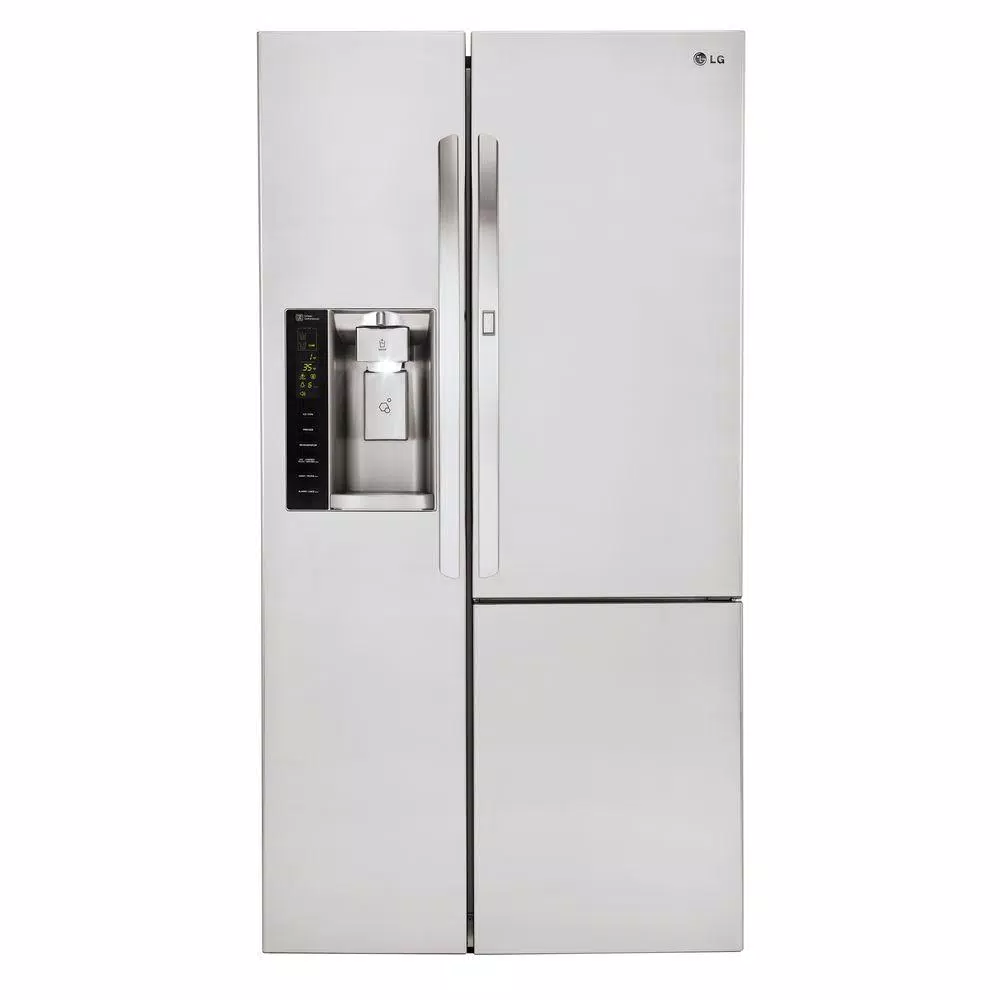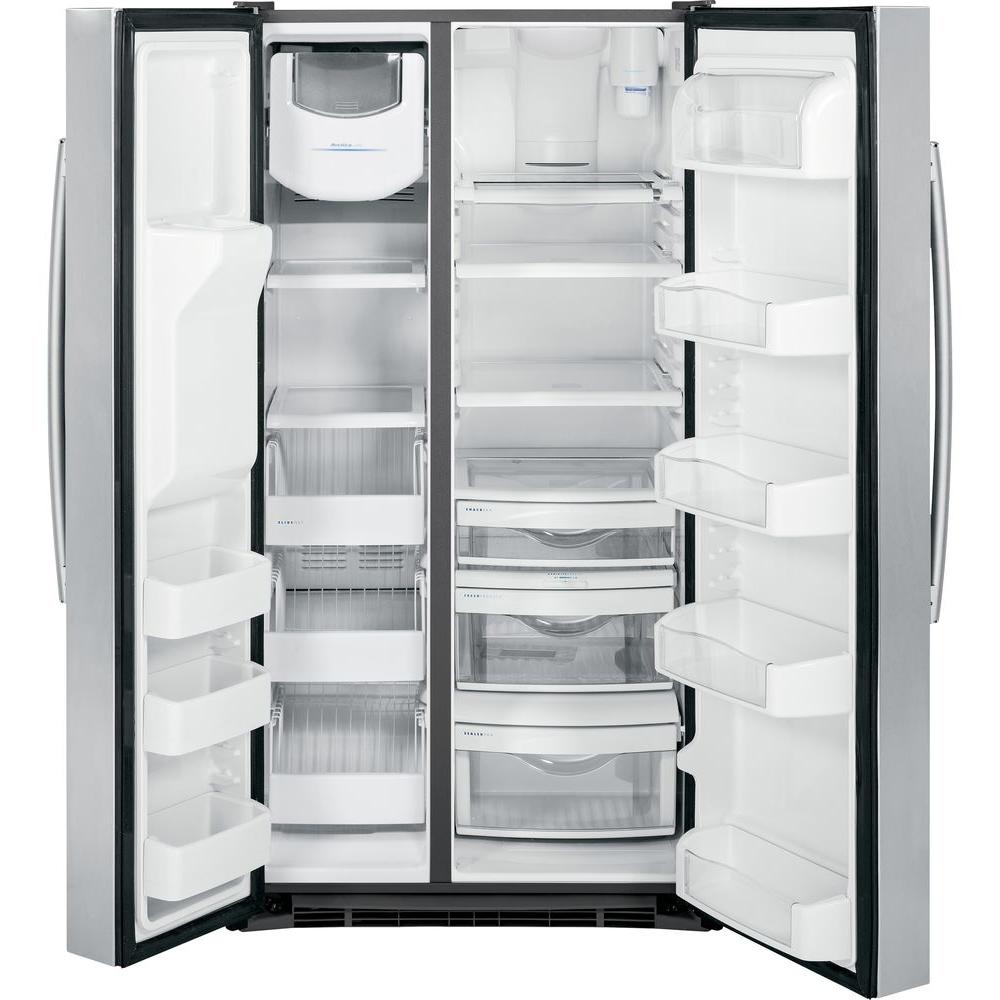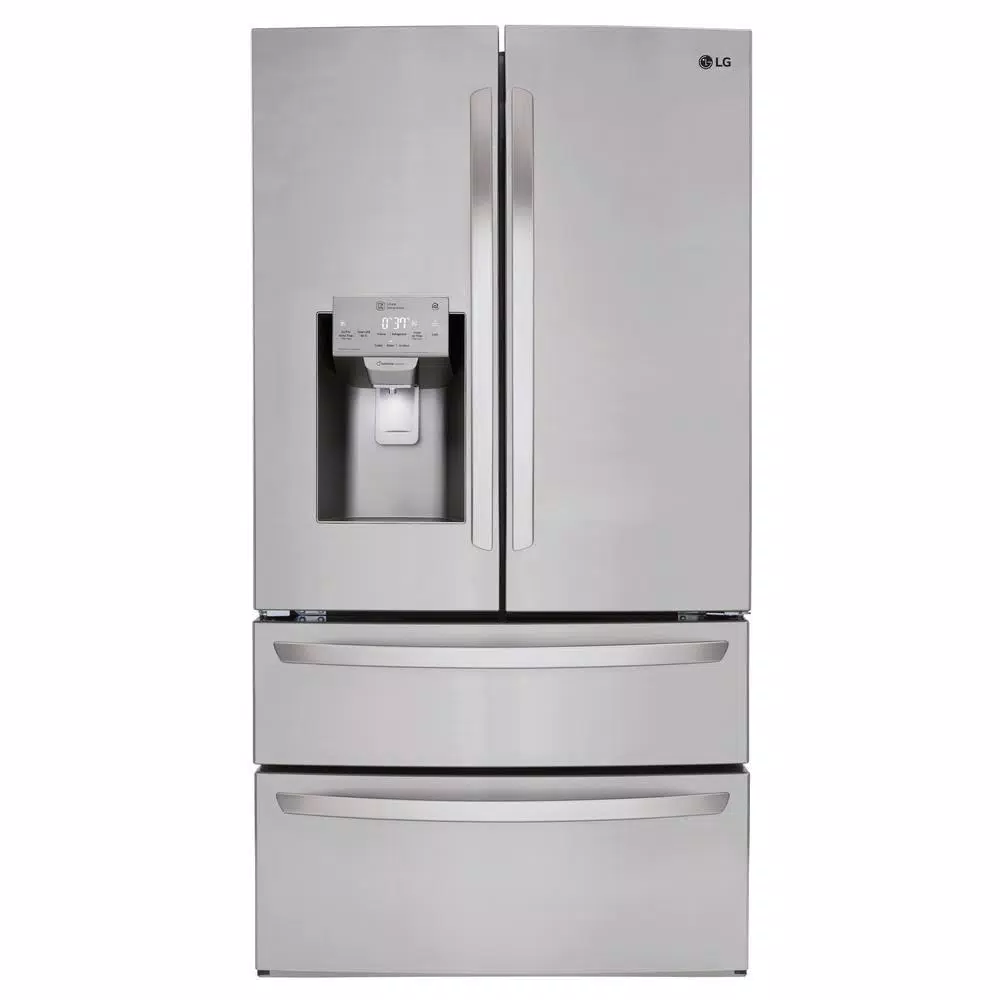LG Electronics 26.1 cu. ft. Side by Side Refrigerator with ColdSaver and Door-in-Door in Stainless Steel
Door-in-Door feature gives quick access and added organization. Slim SpacePlus ice door system frees up valuable shelf space. Smart Cooling system helps keep your food fresher, longer.
With a generous 26 cu. ft. capacity and featuring our Door-in-Door design, this side-by-side refrigerator maximizes food storage space to accommodate all of your family’s food. From post-workout protein shakes to after-school snacks, LG’s Door-in-Door design keeps all your favorites at your fingertips while reducing cold air loss to help keep foods, fresher longer and conserve on precious energy —all with the push of a button. It’s designed with convenient slide-out and folding shelving, tilting and adjustable door bins, and multiple crisper drawers— to help facilitate organization, so you can find just what you need in a snap. Plus, it comes with sophisticated LG styling and features like an intuitive LED display, contoured doors, and Smart Cooling System helps keep your food fresher.
- Nothing beats the convenience of having more food when you need it, and with a generous 26 cu. ft. of space, you’ll have room and room to grow
- For those fly-by visits to the refrigerator, the Door-in-Door feature allows you to get in and get out providing easy access to beverages and snacks. Only LG Door-in-Door models include bonus door bins for added organization and storage
- Door-in-Door with ColdSaver Panel acts like a barrier keeping cold air in where it matters most – in the inside – giving you peace of mind that food will stay fresh longer. It reduces cold air loss to help keep food fresher longer
- Ice makers are great, but not if it means you can’t fit all of your food in the fridge. The Slim SpacePlus Ice System provides the most shelf space and allows even more space for door bins
- From pitchers to pint glasses, finally an ice and water dispenser that can accommodate just about any container. The water and ice dispenser in this LG french door refrigerator is one of the tallest around, measuring in at an ultra-accommodating 12.6 in.
- Smart Cooling system is designed to maintain superior conditions within the refrigerator. The Linear Compressor reacts quickly to temperature fluctuations and helps keep your food fresher, longer. Meanwhile, strategically-placed vents in every section help to surround your food with cool air no matter where you put it
- LED panels located on the rear of the refrigerator provide an exceptionally bright interior and saves energy over traditional lighting
- Humidity-controlled crispers help maintain humidity levels to help extend the life of your fruits and vegetables
- Multi-Air Flow System is designed to maintain superior humidity and temperature levels to help keep your food fresher, longer. Digital sensors constantly monitor conditions within the refrigerator and strategically-placed vents in every section to help surround your food with cool air no matter where you put it
- SmartDiagnosis helps the service center diagnose problems over the phone, helping you troubleshoot quickly
- Contoured doors, hidden hinges, and a host of great interior features give your refrigerator a look that’s as sophisticated as it is functional. And it’s beauty isn’t just the outside. With every feature thoughtfully designed, this appliance helps you create the sophisticated, distinctive kitchen you want—and deserve
- 2-door side-by-side refrigerator has 1 fresh food door and 1 freezer door. With the addition of the Door-in-Door design on this refrigerator, access to beverages and snacks is made easier
- 16.9 cu. ft. fresh food capacity provides spacious interior; 9.2 cu. ft. of freezer space allows for additional storage
Additional information
| Depth (Excluding Handles) | 34 |
|---|---|
| Depth (Including Handles) | 36.31 |
| Depth (Less Door) | 29.06 |
| Depth With Door Open 90 Degrees (In) | 51.13 |
| Height to Top of Door Hinge (in.) | 70.25 |
| Height to Top of Refrigerator (in.) | 69.38 |
| Product Depth x Height x Width (in.) | 36.71 x 70.25 x 35.77 |
| Refrigerator Width (In.) | 35.88 |
| Certifications and Listings | CSA Listed,NSF Listed |
| Manufacturer Warranty | Limited Warranty: 1 Year Parts & Labor, 5 Years Sealed System and Compressor (Parts & Labor), 6-10 Years Linear Compressor (Parts Only) |






by Angel
I waited 6 months for this refrigerator to be back in stock so I could order it. The wait was definitely worth it. I love all the features and the cost made it even nicer. The only thing that I wish LG would do is to put an arrow pointing to where the water will come out the dispenser. I have had 2 guest get wet trying to get water. I would buy again if asked.
by Carlos
The refrigerator is fantastic, my only complain is that the small door has to be closed with more force than the large door. You have to pay attention to make sure that it is closed all the way.
by Vordy
Overall I’d say this fridge is very good and we are very happy with the look, the spaciousness, especially drawers, and functionality of of the fridge. A few items keeping it from 5 stars are: the location of the water dispenser outlet is somewhat awkward and leads to occasional spills, the small door w/in door needs an affirmative push to ensure proper latching and the stainless finish shows a lot of fingerprints.
by Deb
It is a very reasonable price and I love the door in door feature.
by Skeeto
Bought this to replace a different brand refrigerator that was only 4 yrs old and had issues with the ice makers. Love the room, the look and the features of this refrigerator! First LG purchase and so far would definitely buy other appliances/electronics from them!
by Teresa
We love it! The door in door feature is great for drinks and snacks. This refrigerator has so much usable space both in the freezer and main refrigerator side. So happy I made this choice. I considered french door, but am really pleased that I stuck with the side by side.